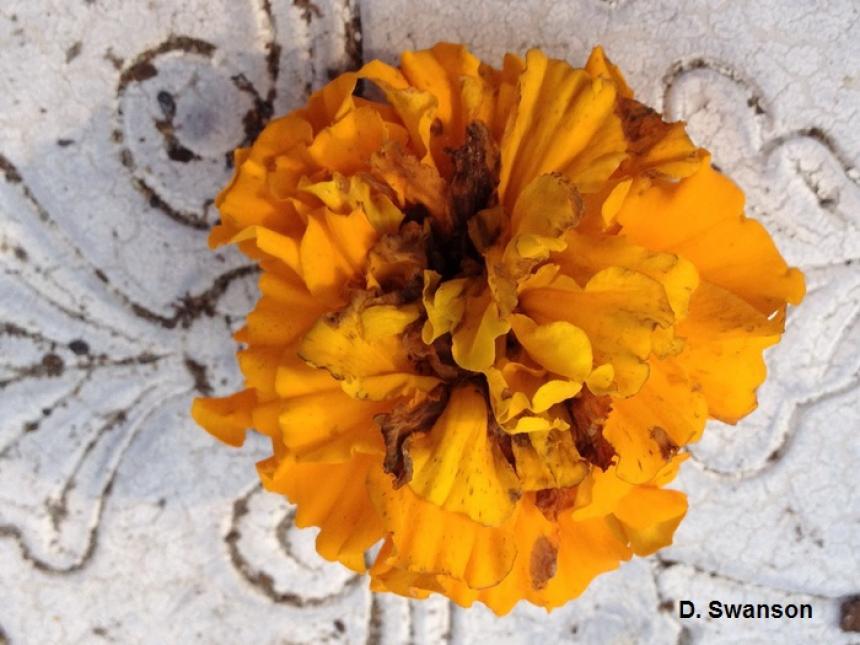The caterpillar of the sunflower moth, Homoeosoma electellum, damages the flowers of echinacea, sunflower, marigolds cosmos, coreopsis and other composites (Asteraceae). Newly hatched larvae are pale yellow, but darken to shades of brown or purple with longitudinal white stripes. Look for premature browing of petal and mats of webbing on the face of flowers for signs of larval feeding. The injury caused by larval feeding can lead to Rhizopus head rot.
Flowers are susceptible in the early stages of bloom, and females lay their eggs at the base of the florets. The newly emerged larvae feed on pollen and florets. The larvae begin tunneling into seeds upon reaching the third instar (larval growth stage). Tunneling continues throughout the remainder of larval development. Later instars bore into the head and consume receptacle tissue and seeds. Many overlapping generations occur throughout the summer. Although a portion of larvae pupate in the heads, the majority of maturing larvae drop to the ground on silken threads to pupate in crevices or under leaf litter. Diapausing larvae overwinter underground.
Damage on marigolds can be mistaken for the flowers normal age progression or botrytis blight after rainy weather, until larva are revealed in dissected flower heads.
Treatment: Bacillus thuringiensis subsp. kurstaki on early instar larvae


